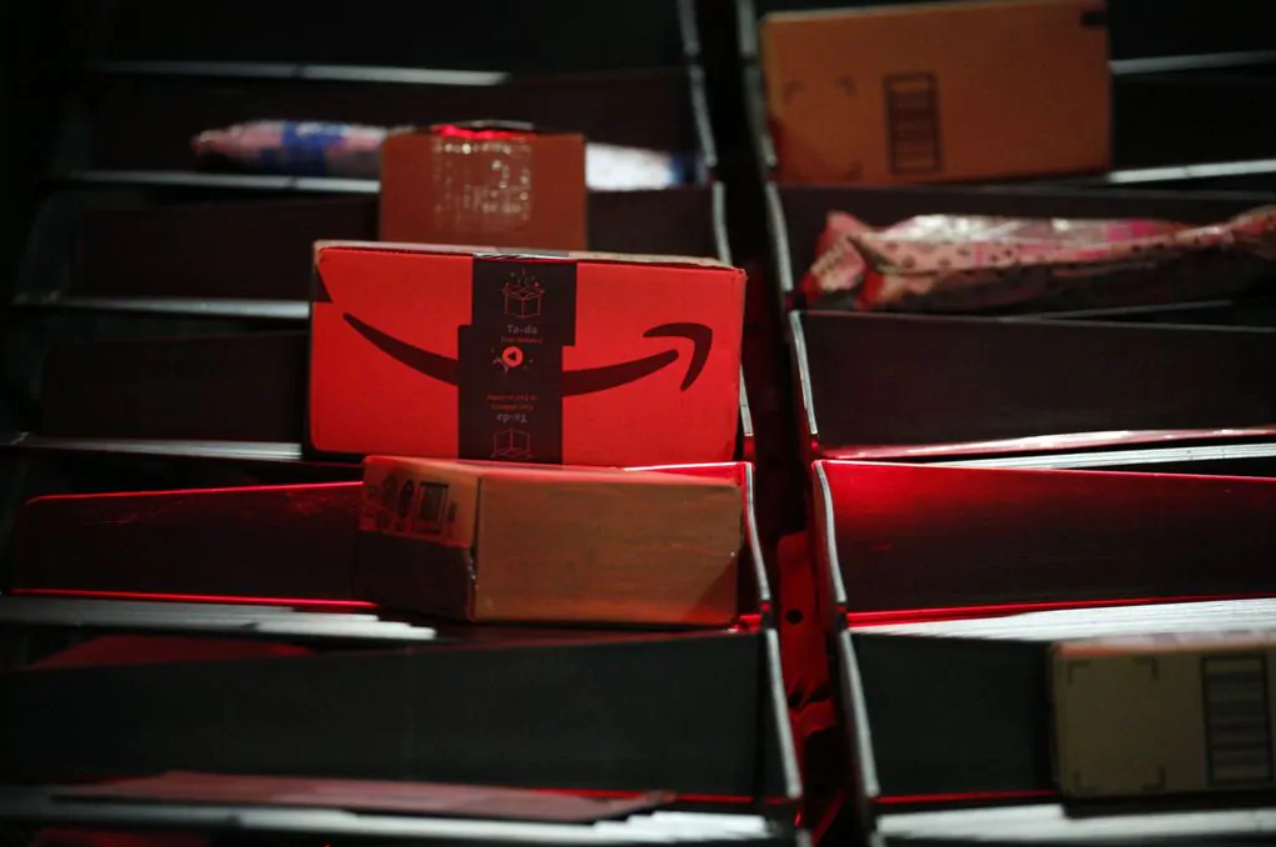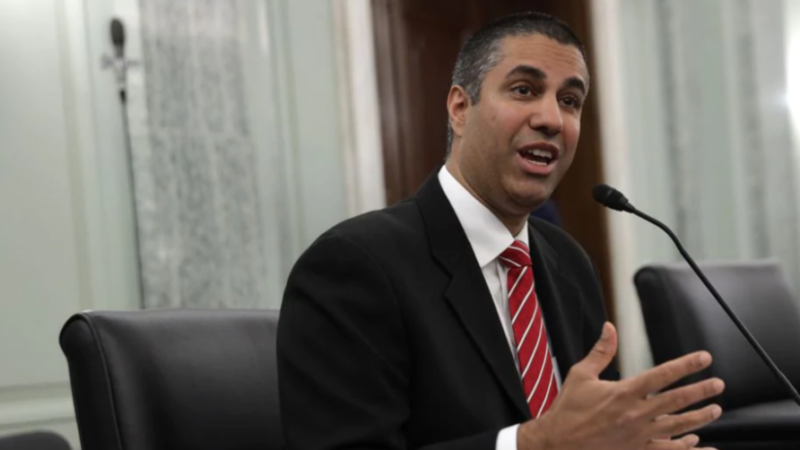Amazon has lost several recent legal decisions that hold it liable for defective products

Amazon fought her lawsuit seeking to hold it liable for the injuries. The only compensation the e-commerce giant provided: a refund.
“This changed my whole life. My apartment was on fire. I was on fire,” Bolger said. “I don’t hate Amazon. I just want them to take responsibility.”
Nearly 60 percent of all physical goods sold on Amazon’s e-commerce marketplace come from third-party merchants, a fact that’s lost on many shoppers, including, at the time, Bolger. Amazon has argued in court that this relationship absolves it of any liability related to defective products sold by those vendors. And for many years, courts have largely sided with Amazon.
(Amazon chief executive Jeff Bezos owns The Washington Post.)
But Bolger’s case and a handful of others in Texas, Wisconsin, and Pennsylvania have halted Amazon’s winning streak. And legislation that was under debate this week in California aimed to place liability squarely on e-commerce retailers that provide a platform for dubious merchants selling dangerous goods.
Bolger’s case and others in California led to a first-of-its-kind bill that would have extended rules that apply in the physical world to electronic commerce. The bill, which Democratic Assemblyman Mark Stone pulled late Friday as the legislative session neared its end, called for holding online marketplaces liable for the products they sell, just as retailers can be held responsible for goods purchased in their brick-and-mortar stores.
Surprisingly, Amazon supported the measure, with one condition: the company wanted the law to apply to all online marketplaces, including its competitors who, for example, do not warehouse and ship products sold by third-party merchants. That drew intense opposition from several Amazon rivals, including Etsy, whose chief executive, Josh Silverman, wrote in a blog post that the measure will saddle small businesses with “complex, hard-to-comply-with legislation that only they can afford to absorb.”
With the legislative session set to end Monday, Stone withdrew the measure, saying in a statement that he’s “committed to continuing the conversation,” though he didn’t commit to reintroducing the bill when the next session starts in January.
Amazon has emerged as the nation’s largest online retailer, in part by turning its store into an online bazaar where more than 2.5 million third-party vendors sell their goods. The company has prioritized that vast selection, allowing merchants to sell on the site with scant vetting. The company has said that, among its screening processes, it uses machine learning technology to identify risky sellers, as well as using investigators to review applications.
The business of selling other merchants’ goods is enormously lucrative for Amazon. In the last quarter, Amazon generated $18.2 billion of revenue from seller services such as fees and commissions, a figure that jumped 52 percent from the same period a year ago.
Listings of products federal agencies have deemed unsafe have led regulators and lawmakers to criticize the company for putting profits over safety. That’s because even when a shopper buys an item from a third party on Amazon’s platform, Amazon keeps a roughly 15 percent cut of the sale.
Though the company aims to develop a marketplace with the widest selection, Amazon spokeswoman Cecilia Fan said it’s not doing so at the expense of customer safety.
The challenge for Amazon is that as it has allowed so many sellers into its marketplace, it’s also made it difficult to police for dangerous goods. And some Chinese manufacturers and sellers, which it aggressively recruited to create a catalog of products so extensive that no other retailer could match it, do not manufacture products to standards set by U.S. lawmakers and regulators.
In addition to the claim that its practices sometimes result in the sale of dangerous products, Amazon has also come under fire for counterfeit goods sold by third-party merchants. When Rep. Hank Johnson (D-Ga.) challenged Bezos on the proliferation of fake goods on the site during a hearing on tech giants’ market clout last month, Bezos countered that Congress should enact tougher laws targeting counterfeiters. And in July, Amazon notified third-party vendors that they will no longer be able to anonymously sell goods on its U.S. e-commerce site as of Sept. 1, a move that could also help curb sales of dangerous and counterfeit items that have plagued the site in recent years.
Until recently, legal experts say, courts often found Amazon’s relationship with those sellers at enough of an arm’s length that it was insulated from liability for defective goods. Product liability laws vary from state-to-state, but generally were written decades ago, before Internet retail existed. Amazon racked up a string of legal victories, arguing that it merely was a conduit that connected sellers to shoppers, sheltered from claims that it was responsible for defective goods third-party merchants sold on its site.
“What the courts have been struggling with is, can Amazon do that?” said Justin (Gus) Hurwitz, a cyberlaw professor at the University of Nebraska at Lincoln.
That’s because many of the third-party sellers are effectively judgment-proof, Hurwitz said. When products from Chinese sellers hurt shoppers in the United States, the merchants often disappear, leaving consumers unable to hold them accountable.
Recently, courts have started to apply the same rules to Amazon that exist for brick-and-mortar retailers, which can be held liable for products they sold. Earlier this month, in the Bolger case, the Fourth District Court of Appeal in California ruled that, as a physical retailer, Amazon is part of the distribution chain and could have exerted influence on product safety in a way few consumers could. And since the third-party seller, a Chinese company, couldn’t be found by the litigants, Amazon was the “only viable defendant.”
“Because Amazon adheres to a business model that fails to prioritize consumer safety, it should be made to bear the consequences,” the court ruled. “Indeed, blessing Amazon’s evasion of product liability would give an incentive to companies to design business models, like Amazon’s, that do nothing to protect consumers from defective products.”
The ruling is not binding outside California. But courts often consider decisions from other states as they make their own determinations, and the Bolger decision along with a handful of other similar rulings seem likely to make it much harder for Amazon to dodge liability from defective products sold by third parties on its website.
“Plaintiffs can now point to the decision to make future case decisions,” said Jeremy Robinson, Bolger’s lawyer. “Now Amazon has bad precedent out there.”
Amazon intends to appeal the decision, Fan said.
“The court’s decision was wrongly decided and is contrary to well-established law in California and around the country that service providers are not liable for third party products they do not make or sell,” Fan said in a statement.
If the appeals court decision is not overturned, Bolger will return to the district court where she’ll need to prove the laptop battery was defective and that the defect caused her injury, to hold Amazon liable.
A key to the Bolger ruling, and the other recent liability rulings against Amazon, is that the company warehoused and shipped the defective products. Rulings have held that Amazon’s possession of those products in its warehouses, as well as it’s shipping them in boxes covered in the company’s logo, puts it squarely in the distribution chain.
Taking possession of goods from third-party sellers has been a key to Amazon’s success. Sending products to Amazon warehouses, under a program called Fulfillment by Amazon, makes those items eligible for speedy Prime shipping, which can often be the difference in a third-party merchant making a sale.
A Texas judge determined that placing a defective product “into the stream of commerce” was a factor when she ruled in June that Amazon could be held liable for the sale of the item by a third party on its site. In that case, Morgan McMillan’s 19-month-old daughter swallowed a coin-sized battery from a knockoff Apple TV remote that didn’t have a childproof seal on the battery compartment. The battery lodged in the girl’s esophagus, leaking caustic fluids that McMillan alleges have increased her daughter’s risk of infection and choking. The battery needed to be surgically removed.
The McMillan family purchased the remote on Amazon from a Chinese seller they have since been unable to locate.
So the family sued Amazon, arguing that the company could have exerted pressure on the seller to improve product safety.
In denying Amazon’s efforts to have the case dismissed in June, federal judge Vanessa D. Gilmore found that the company could have pulled the dangerous product. McMillan notified Amazon of the product defect.
“The judges are scratching their heads, saying ‘Wait a minute,’” McMillan’s lawyer, Jeff Meyerson, said.
The McMillan decision wasn’t a complete defeat for Amazon. Gilmore ruled that Amazon couldn’t be held liable for failing to warn shoppers that the remote was dangerous. That’s because the product description was provided by the seller, not Amazon, giving it immunity under Section 230 of the Communications Decency Act. That rule, which some lawmakers want to change, also generally insulates social media companies such as Facebook, Google, and Twitter from liability for harmful content posted on their sites.
Amazon declined to comment on the case. To hold the company liable, McMillan will now how to prove in court that the remote the family purchased from Amazon was defective and that the defect led to her daughter’s injury.
The new rulings could play a role in appeals of cases Amazon has won. Dave Carpenter lost his lawsuit against Amazon that he filed after the charger for a hoverboard he purchased for his daughter caught fire. Carpenter, his wife, and daughter weren’t at their Santa Rosa, Calif., home when the fire damaged his house. But his two dogs — a Goldendoodle name Bella and a Boston terrier named Boo — were. When he returned home to find firefighters battling the blaze, he found the dogs under a tarp on his lawn, dead.
Carpenter didn’t have an understanding that third-party sellers operate on Amazon, he said. He assumed the hoverboard was vetted because he didn’t think Amazon would put its name behind a product that was dangerous.
“That’s why we got it from there; it was Amazon,” Carpenter said.
Carpenter, though, lost his case when federal judge Jon Tigar in the Northern District of California ruled, in part, that there was not sufficient evidence that Amazon’s role was “a necessary factor in bringing the product to market.” Carpenter is appealing the decision.
Amazon is also facing deep-pocketed insurers that have the financial wherewithal to go toe-to-toe against the company in courtrooms. Insurers often assume the claims of customers when, say, their house was damaged by a faulty product.
Luke Cain’s Eau Claire, Wis., home flooded after an adapter for a faucet he purchased from a Chinese-based third-party seller on Amazon failed. State Farm insured Cain and took Amazon to court, arguing the retail giant was responsible for the damage. A Wisconsin judge denied Amazon’s effort to have the case dismissed, and the company settled with State Farm without disclosing terms.
Amazon declined to comment on the case.
“Insurance companies have the pockets they need to do the inspections and pursue the investigations necessary,” State Farm’s lawyer in the case, Teirney Christenson, said. His firm currently has claims against Amazon pending in seven states thanks to the new trend, he added.






